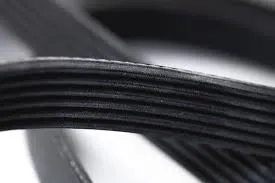- Arabic
- French
- Russian
- Spanish
- Portuguese
- Turkish
- Armenian
- English
- Albanian
- Amharic
- Azerbaijani
- Basque
- Belarusian
- Bengali
- Bosnian
- Bulgarian
- Catalan
- Cebuano
- Corsican
- Croatian
- Czech
- Danish
- Dutch
- Afrikaans
- Esperanto
- Estonian
- Finnish
- Frisian
- Galician
- Georgian
- German
- Greek
- Gujarati
- Haitian Creole
- hausa
- hawaiian
- Hebrew
- Hindi
- Miao
- Hungarian
- Icelandic
- igbo
- Indonesian
- irish
- Italian
- Japanese
- Javanese
- Kannada
- kazakh
- Khmer
- Rwandese
- Korean
- Kurdish
- Kyrgyz
- Lao
- Latin
- Latvian
- Lithuanian
- Luxembourgish
- Macedonian
- Malgashi
- Malay
- Malayalam
- Maltese
- Maori
- Marathi
- Mongolian
- Myanmar
- Nepali
- Norwegian
- Norwegian
- Occitan
- Pashto
- Persian
- Polish
- Punjabi
- Romanian
- Samoan
- Scottish Gaelic
- Serbian
- Sesotho
- Shona
- Sindhi
- Sinhala
- Slovak
- Slovenian
- Somali
- Sundanese
- Swahili
- Swedish
- Tagalog
- Tajik
- Tamil
- Tatar
- Telugu
- Thai
- Turkmen
- Ukrainian
- Urdu
- Uighur
- Uzbek
- Vietnamese
- Welsh
- Bantu
- Yiddish
- Yoruba
- Zulu
Nov . 30, 2024 10:53 Back to list
Understanding the Function and Maintenance of Fan Belt Adjusters in Automotive Systems
Understanding the Fan Belt Adjuster Importance and Maintenance
The fan belt, also known as the serpentine belt or drive belt, plays a crucial role in the performance of an automobile. Its primary function is to drive various components of the engine, including the alternator, power steering pump, water pump, and air conditioning compressor. However, to ensure that the fan belt operates efficiently, it must be properly tensioned. This is where the fan belt adjuster comes into play. In this article, we will explore what a fan belt adjuster is, its significance, and how to maintain it for optimal vehicle performance.
What is a Fan Belt Adjuster?
A fan belt adjuster is a mechanical component designed to maintain the appropriate tension on the fan belt. This component helps to prevent the belt from becoming too loose or too tight, both of which can lead to significant issues. When the belt is too loose, it can slip off the pulleys, leading to a decrease in performance for the engine components that rely on it. Conversely, if the belt is too tight, it can cause excessive wear and tear on the belt and the components it drives, potentially leading to premature failure.
The fan belt adjuster can be found in various forms, including manual tensioners that require periodic adjustments, and automatic tensioners that self-adjust based on the load and operating conditions. Modern vehicles more commonly utilize automatic tensioners, as they provide greater convenience and reliability.
Importance of Proper Fan Belt Tension
Maintaining the correct tension on the fan belt is critical for several reasons. Firstly, it ensures the smooth operation of the engine accessories. An adequately tensioned belt minimizes slippage, which is vital for components like the alternator to recharge the battery effectively. If the alternator does not receive sufficient rotation, it can lead to battery drain and electrical issues within the vehicle.
Secondly, proper tension helps to prevent premature wear on both the belt and the associated pulleys. A loose belt can cause fraying and cracking, while a tight belt can lead to bearing failure in the components it drives. Such failures can result in expensive repairs and extended downtime for the vehicle.
Lastly, maintaining the correct belt tension contributes to overall fuel efficiency. A slipping or improperly tensioned belt can increase the load on the engine, causing it to work harder and consume more fuel. This can be particularly noticeable in stop-and-go traffic or during heavy engine loads.
fan belt adjuster

Maintenance Tips for the Fan Belt Adjuster
To ensure that the fan belt adjuster and the belt itself operate effectively, regular maintenance is essential. Here are some important tips
1. Regular Inspections Periodically check the fan belt for signs of wear, such as cracks, fraying, or stretching. Also, inspect the adjuster for any signs of damage or misalignment.
2. Check Tension If you have a manual tensioner, check and adjust the tension as needed. For automatic tensioners, ensure that they are functioning correctly. A faulty automatic tensioner may need replacement to ensure proper belt tension.
3. Listen for Noises Unusual noises such as squealing or chirping can indicate that the belt is loose or worn. If you hear such sounds, inspect the belt and adjuster immediately.
4. Replace as Needed Both the belt and the adjuster have a limited lifespan. Typically, a serpentine belt should be replaced every 60,000 to 100,000 miles, while adjusters may need to be replaced if they show signs of wear or become faulty.
5. Professional Maintenance If you are unsure about how to inspect or replace the fan belt adjuster, consider seeking help from a professional mechanic. They can provide a thorough inspection and make necessary adjustments or replacements to ensure your vehicle runs smoothly.
Conclusion
The fan belt adjuster is a small but vital component that plays a significant role in the performance and longevity of a vehicle. By ensuring optimal tension and maintaining the fan belt, drivers can avoid numerous mechanical issues and enhance overall vehicle performance. Regular maintenance and inspections are crucial, as is seeking professional help when needed. Understanding this critical component will not only save money in repairs but also contribute to a safer and more efficient driving experience.
-
Upgrade Power Steering Pump Belt for Smooth, Quiet Operation
NewsAug.27,2025
-
Precision Timing Belt & Chain: Engine Performance & Durability
NewsAug.26,2025
-
Precision Lathe Drive Belts: Durable & Reliable Performance
NewsAug.25,2025
-
84.5 Serpentine Belt: Durable & Precision Fit for Your Engine
NewsAug.24,2025
-
Premium Ribbed Drive Belts for Quiet Power Transmission
NewsAug.23,2025
-
High-Performance Vehicle Timing Belt for Engine Precision
NewsAug.22,2025

